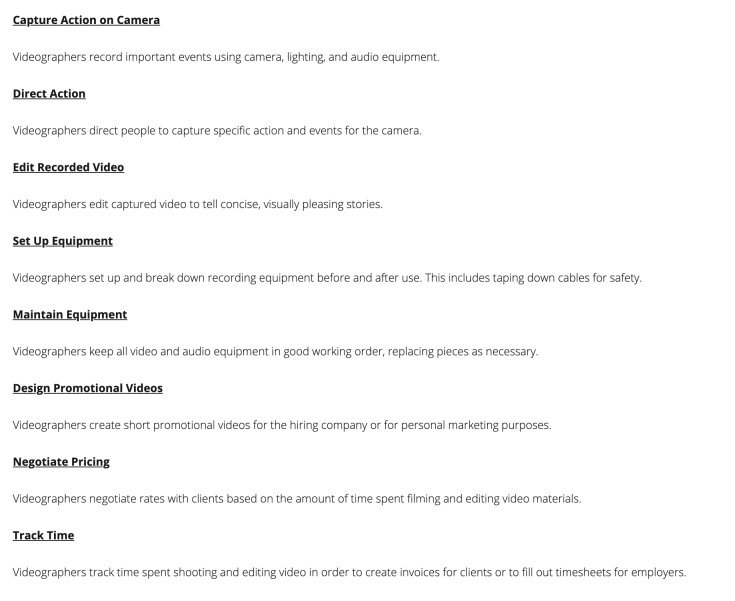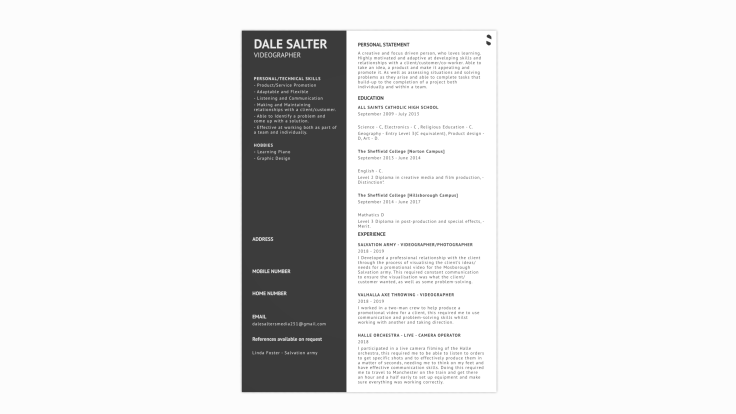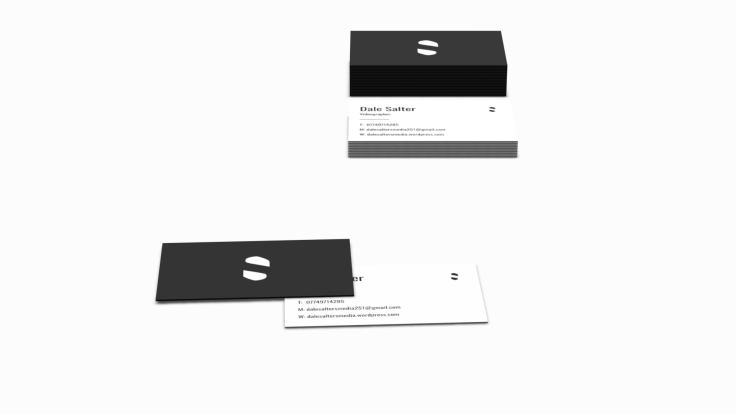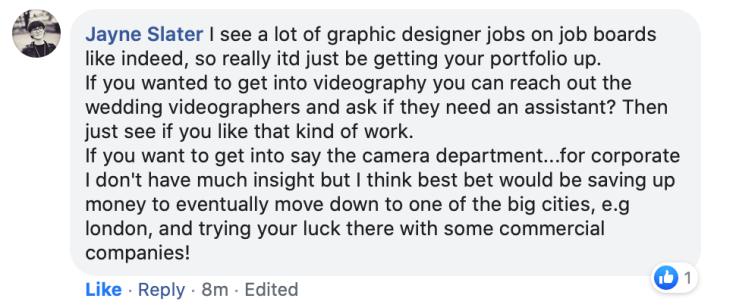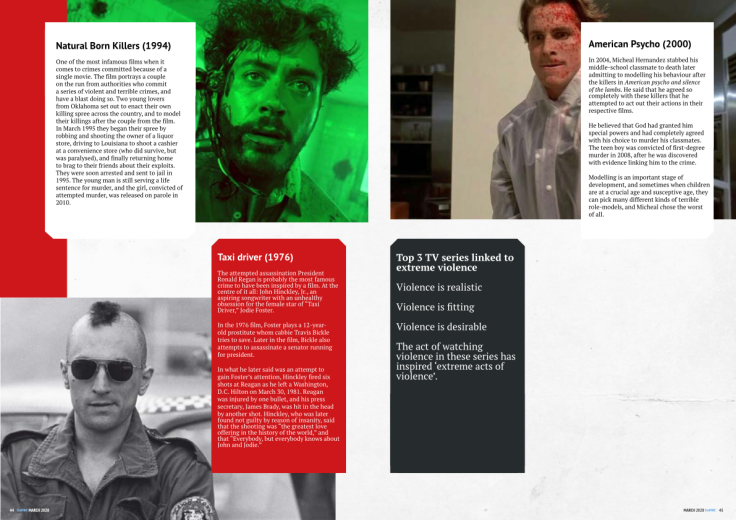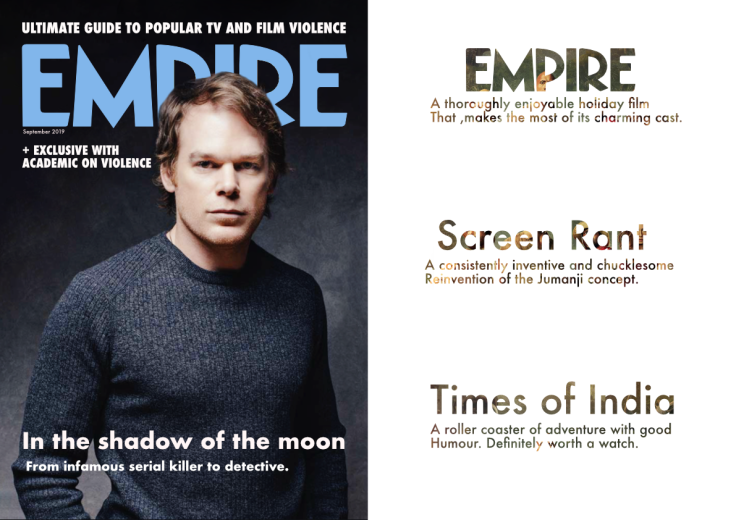This essay will investigate the impact of graphic scenes of physical violence in broadcasting and the different influences on individuals in society combined with the factors that can lessen or worsen the effect. It will investigate the ways in which a culture can be both the influencer and be influenced by media violence. It will examine the broadcasting industry’s construction of violence as well as transversing society’s need for violence, and raising the question does society on some level manipulate individuals into craving violence.
As a mass communication media “a form of communication that reaches a broad audience and include television, radio, film, music, books and the internet.” Aliprandini, M., & Finley, L. (2018) Broadcasting has been a part of societies system for a long time as well as social behaviour, interestingly to consider the way media affects society, so it is, therefore, plausible to reason that because they are a significant part of what makes up cultures in society it has an effect, influence on individuals in society. The effect theories model supports this idea of an effect caused by the “mass media”. According to Branston, G and Stafford, R. (2010) “The effects model (also called the hypodermic model) is the name given to approaches that emphasise what the media do to their audiences. Power is assumed to lie solely with the ‘message(s)’. The media are often called ‘the mass media’ or ‘mass communications’. This rightly emphasises the size and scale of their operations but renders the rest of us somewhat passive – ‘dupes’ or ‘dopes’. The language of this model often implies that meanings are ‘injected’ into the single mass Audience by powerful, syringe-like media – hence ‘hypodermic’. The next step is to describe the media as working as a drug, and then to suggest that the audience is drugged, addicted, duped.” Branston, G and Stafford, R. (2010). This drug-like state may befall issues such as a dissociated state, a “compassion fatigue” a phrase often used of one set of possible audience responses to media images of terrible crisis, suffering and disaster.”, etc. Branston, G and Stafford, R. (2010).
The Limited Effects Theory “As opposed to hypodermic needle approaches, which assume that media consumers are passive and essentially helpless recipients of media messages, limited-effects theories posit the consumers as active shapers of their own media experience. That is to say, media users are active in both selecting the media that they consume and, perhaps more importantly, interpreting its meaning. These theories don’t rule out the possibility for media to influence us.” Ferguson, C. J. (2016). This supports this concept of there needing to be pre-consisting conditions, etc. In order for this “Limited effect” to produce an individual which would act out violently after watching a scene of graphic physical violence to the extent of murder and other extreme acts of violence. So, for the most part, the majority of the mass audience according to the limited effects theory won’t be that adversely affected, however, there will be some form of influence, as to its level of influence can vary as individuals in society contain varying sets of ideas and ideals that are unique to that individual and so predicting violent media reaction differs from person to person.
This differentiating reaction is further emphasized by differences in culture, as
Culture is the main part of what makes up society, its founding structures, and ethics, common ideas and influences. Simply put, it’s a collective ideology, a system of ideas, opinions and notions. “In Marx’s theory, it is a fact of human productive activity which is most fundamental for the organisation of social, political and cultural life. Marx’s term ‘consciousness’ is important here; by this, he seems to mean not simply the human species’ capacity for thought, but the organisation and patterning of human thought and activity in a collective sense.” Billington, R., & Strawbridge, S. (2000). This “collective sense” delves into this idea of a set of “dominant ideas which become part of the common sense of any society” Branston, G and Stafford, R. (2010), “There are at least two every day, common-sense meanings of culture. The first is the ‘best’ achievements and products in art, literature and music. Billington, R., & Strawbridge, S. (2000), The second is the artificial growth or development of microscopic organisms or species of plants, a meaning deriving from a much older usage of the verb ‘to cultivate’: meaning to husband, and originally referring to agricultural techniques.” Billington, R., & Strawbridge, S. (2000), this brings forward the idea that society is an organised group of people who live together and are connected with one another. Culture, however, has certain values, customs, beliefs and social behaviour, whereas society encompasses people who share mutual beliefs, values and way of living. The first common-sense meaning opens up the way in which graphic scenes of physical violence can have some influence on individuals, as Films and TV are in the “common-sense” meanings in culture as well as finite ways in which certain “dominant ideas” can be minorly or majorly different, thus changing the ways in which it can be influenced, as well as the various ways it can be further influenced as culture is like an organism growing and developing but unlike an organic organism it doesn’t have a point at which it halts growth.
These ideals and notions are part of the foundation of Ideology as Ideology operates by orienting people in social contexts towards accepting certain values about the world as natural, obvious self-evident, or inevitable. – Thwaites, T, Davis, L and Mules, W. (2002) by orienting people towards ideals ideology opens up the audience to be influenced, with this malleability within culture individuals can be influenced by Media pieces, this can be revealed by textual analysis through the ways the discourses and texts position readers to embody ideology. In this process of embodiment, people resolve contradictions and accommodate values which do not necessarily equate with their own day-to-day life. The values become built into their understandings of their own desires, identities and expectations of future situations. Thwaites, T, Davis, L and Mules, W. (2002) Through ideology individuals in society can be influenced by watching violence, however as for a concrete influence, a cause and effect relationship is not possible, however, there has been theories as to some of the influences that can be had after watching media violence, for instance throughout Game of Thrones(2011 -) there are visceral scenes of physical violence with a great deal of verisimilitude, these scenes may contribute to compassion fatigue “ a phrase used of a set of possible audience responses to media images of suffering. Like all images it produces consequences. The term loosely evokes an ‘audience; which is wary of terrible images.” Branston, G and Stafford, R. (2010). Precipitated by excessive viewing of violence and can induce an overloaded obligation to be compassionate as an audience and consequently, the individual’s metre for how compassionate they are in real life may be altered as well causing individuals to be less compassionate. Branston, G and Stafford, R. (2010). This loss of compassion leads into the general aggression model which dictates that the audience learn how to behave in situations by watching media. Aliprandini, M., & Finley, L. (2018). And thus this learned trait of less compassion can in some cases lead to individuals acting out violently in real life because compassion is gone and thus what would seem outrageously violent doesn’t anymore.
Compassion fatigue has an influence, although as to the severity of it, it is not that extreme on its own, for instance, Game of Thrones(2011 -) has some extremely graphic scenes of physical violence, however it has not as of yet been linked to any violence, therefore the viewing of violence by the audience has had an influence however not to the extreme of influencing a person who then goes out and kills someone, whereas the series Dexter(2006 to 2017) about a serial killer, has numerous murders linked to the series. There are two differences between the series one Game of Thrones(2011 -) has an increased amount of visceral physical violence whereas Dexter(2006 to 2017) has a lesser amount of visceral physical violence shown. However, another factor to consider is the genre of the two pieces one is a drama, the other is a fantasy. These two differences may be the reason for the difference in influence, as according to the Limited effects theory, it is plausible that a specific group, a demographic is more attracted to drama than fantasy and because of this exposure to violence to a certain demographic occurred, the differences in influence between the two series is drastically different because the people being affected are different. This influence had by Dexter(2006 to 2017) does seem to suggest that the level of violence may not play the main role it may be more about the individual watching the series and repeated exposure to viewing violence more than anything. This goes into the opposing effects theory of the limited effects model, the hypodermic model which in this scenario watching violence repeatedly is like a drug and at some point, it may not be enough at which point the individual may feel the need to act out in violence in real life rather than just watching violence.
The reaction had by the audience after viewing graphic scenes of physical violence is “one of the central concerns in the study of media has been the question of media “effects”. What influence does the media have on behaviour, attitudes, perception, social development and understanding? Among these concerns has been a recurrent theme of the relationship between media exposure and violence. More focused and very vocal community concern in Australia emerged after the Melbourne Hoddle Street and Queen Street massacres which resulted in a major inquiry into the role of the media as it might promote social violence. This inquiry was conducted by the Australian Broadcasting Tribunal and a four-volume report, ‘TV Violence in Australia’ was tabled in parliament in 1990.” Langer, J. (1995) Before an influence of viewing violence in broadcasting can be determined, the way in which scenes of violence are perceived, decoded by the audience must first be considered. Stuart hall’s reception theory of how “Ideology is ‘encoded’ into texts, Hall suggests, but different audience groups are capable of ‘decoding’ texts in different ways. Some spectators will indeed acquiesce to the ‘preferred meaning’ of the text as it has been encoded. Others will make a ‘negotiated’ reading in which they accept some but not all of the preferred meaning. Still, others will engage in an ‘oppositional’ reading, not only disagreeing with the preferred meaning but also recognising its ideological nature and role in justifying power relations. Hall’s approach makes ideology critique more flexible and acknowledges the fact that not all audience members read texts in the same way. Gillespie, M. and Toynbee, J. (2006).
Therefore the influence had on individuals of graphic scenes of physical violence may vary depending on the levels of graphic scenes of physical violence shown and the way in which they are viewed by the audience. Signs are everything in influence to the audience, a signs referral function is its ability to invoke a content, however, it is not its only function it has many, therefore the opportunity for one scene of violence to influence a person has various routes. Thwaites, T, Davis, L and Mules, W. (2002) Another function, a multilingual function suggests the codes by which the sign might be understood. Thwaites, T, Davis, L and Mules, W. (2002) These codes/signs can be deconstructed through use of semiotic terminology such as the signifier which is the sensory impression of the sign: the mental image of marks on a page, whereas the signified is the concept the sign evokes the relationship between the two are the way in which a sensory impression ‘points to’ or invokes a concept, and is called signification. Thwaites, T, Davis, L and Mules, W. (2002) The connotations of a sign are the set of its possible signifieds. Thwaites, T, Davis, L and Mules, W. (2002) and The denotations of a sign are the most stable and objectively verifiable of its connotations. Thwaites, T, Davis, L and Mules, W. (2002)
In the Dexter(2006 to 2017) scene in which the character kills a victim, the character is in a darkened church with a visible, the church a signifier of the holy place, a sacred place, yet it is being used by the killer to commit a deadly sin. The signification of this being a relationship of how the character may be trying to justify the action of murder, although there are further connotations of this action, one indicator the darkness could be inferring he is the devil, pure evil. The denotation of darkness is the absence of light, concealment, which could further infer that the character doesn’t want to been seen, and could invoke a feeling of the character being ashamed of killing, guilty even. Here the analysis of the scene is important here because the act of the character appearing guilty may be the ‘preferred’ meaning of the creator of the piece, although it could be argued that this could be a ‘negotiated’ meaning or even an ‘oppositional’ meaning. For instance, the victim is restrained to a surface with cling film naked the signifier, the signification of this could be because its cleaner, easier to dispose of evidence tying the character to the murder, however, there are further connotations of this such as the factor of the victim being naked this could infer a sexual attribute to the killing, which from the series wouldn’t appear to be a ‘preferred’ meaning, but more of a ‘oppositional’ one.
Another factor is the cling film, a transparent material so the killer can see the blood as he kills his victim, yet at the same time not get the blood on himself. The denotation of this being that the character is ensuring evidence will not be, a factor and thus the character shouldn’t be caught although there are connotations of this being that much like the characters own philosophy of having darkness inside with it overtaking him, the cling film may be a self-portrait of Dexter as the blood fills the cling film, it takes over the victim. In the final act before killing the victim, Dexter traces the blade slowly up the victim’s body before, holding the blade up and sinking it effortlessly and emotionlessly into the victim killing him. This act of killing has various connotations, the emotionless could infer a sociopathic behaviour, or it could infer that the subject is feeling suggests of emotion behind the face of normality in this act of evil. Another reading from this could be the connotation of this act of killing in a church is a human sacrifice, as a way to atone for sins, as well as a way of, making the act of killing seems like justice, righteousness, a way of potentially justify the sin to the killer. Throughout this scene there are other connotations, that can go deeper into the reading of the scene, it is this almost endless different reading possibilities that may be a reason as to why real-life killing is linked to the series because there can be ‘negotiated’ and ‘oppositional’ invoked by individuals not originally encoded to by the creators(coders) preferred meaning.
In-Game of Thrones(2011 -) a series not yet linked to killings, or real-life violence, has various scenes in which the physical violence goes way beyond the verisimilitude in the dexter series. The main difference between the two series being that in the scenes the act of killing in Dexter(2006 to 2017) is focused on the killer, whereas in Game of Thrones(2011 -) in a scene in which a character is killed by the pouring of gold over his head, crowning him, the audience watches as the character flails in the act of dying, the focus is on the victim, in this case, more so than the killer as in Dexter(2006 to 2017) In this scene much like the other series, there are various signs, such as the darkness, and the signifier of the gold crown, however, these signs in this fantasy series may mean less in terms of the actual effect it has whereas in a drama series such as Dexter (2006 to 2017) In the scene it is dark, and yet unlike dexter has other characters in the room watching so is not a connotation of concealment or even evil, it’s almost got a justice evoking feeling to it much like Dexter(2006 to 2017) the gold denotes a precious metal associated with wealth and prosperity and yet in this scene, it is evident this is not the case as it’s the opposite of prosperity. However, it could also be inferred that this gold as prosperous as it is forever and an action which could lead to peace for the one who poured the molten gold. there are further connotations, and it is this ability for any graphic scenes of physical violence to be analysed in various ways, none of which are right or wrong, answers simply the ‘Preferred’, ‘negotiated’, ‘oppositional’ meanings may exacerbate the issue of media violence influencing individuals. This is because only to a certain extent as a scene is created can it be determined how it will be viewed by the viewer, this uncontrollability is part of the problem with violence in broadcasting as it can’t be fully understood.
Opinions on this influence had by violence in the media and “Controversy over violence in the media has led to an abundance of media critiques from sociologists as well as parents and politicians. At one extreme, critics argue that regular contact with violent images and concepts produces violence, or at least heightened aggression, in its consumers. Children are considered more vulnerable to media’s images and language and less discerning of the difference between fantasy and reality and the consequences of violence.” Aliprandini, M., & Finley, L. (2018) Quite a majority of opinions are on the negative side of the influence gained by watching violence on television. “For many years, people have been concerned about the potential impact of television violence on children who enjoy popular action shows. I can remember during my own youth, for instance, people worrying that we children couldn’t distinguish reality from fiction and that we might shoot someone in the face and think they’d get right back up like the characters in Bugs Bunny car-toons did. Others worried that superhero shows like Mighty Morphin Power Rangers would teach us that violence was an acceptable way to handle conflict.” Ferguson, C. J. (2016). These accusations of a cause and effect connection between media violence and aggression/violence aren’t a direct correlation of effect.
Instead of looking for cause-effect relationships the independent Broadcasting Authority in Britain, through the work of Gunter and Wober, developed by a strategy to examine the media violence nexus in terms of community perceptions and attitudes. Instead of looking for the connections between media violence and real violence, Gunter and Wober decided to access community perceptions of violence and what role viewers felt the media played. As might be expected perceptions of, and attitudes towards violence varied according to such social variables as age, gender, whether viewers were parents or not and strength of religious beliefs. But as Cunningham points out, the community perceptions approach to media violence does two things: it avoids the fraught area of the effects-research traditions and at the same time it says that those who wish to still advance causal relationships are simply “one part of community perceptions. And of course, these ‘perceptions’ are counteracted or balanced by other perceptions”. Langer, J.(1995) Therefore attitudes towards violence are both positive and negative, however as attitudes shift these opinions can have an influence on the supposed victims of media violence, for instance in some cases watching violence can have a cathartic effect “The idea, originating from Greek philosopher Aristotle, that the viewing of tragedy has a cathartic, or purgative, effect on viewers. Contemporary media theorists have developed the idea to suggest that violent media elicits a similar, positive effect.: Aliprandini, M., & Finley, L. (2018) This catharsis may have a relieving effect preventing and resolving aggression rather than inspiring it.
Media violence can have a cathartic positive effect on individuals, although there are some significant studies on the media side effects of viewing violence. Most theorists would agree that the short term effects of exposure to media violence are mostly due to 3 processes: 1) The priming process, through which spreading activation in the brain’s neural network, excites other brain nodes such as cognition, emotion or behaviour. This priming makes linked behaviours more likely, which means media violence primes aggressive concepts, which make aggression is more likely. 2) The arousal processes – through which media violence arouses the observer, aggressive behaviour may also become more likely in the short run for two possible reasons – excitation transfer and general arousal. 3) The immediate mimicking of specific behaviours – The third short term process of imitation of specific behaviours, can be viewed as a special case of a more general long-term process of observational learning. The neurological process through which this happens is not completely understood, but it seems likely that “mirror neurons,” which fire when with behaviour is observed or when the same behaviour is acted out, play an important role. L. Rowell Huesmann (2007). Long term content effects, on the other hand, seem to be due to 1) longer-lasting observational learning of cognitions and behaviours (i.e., imitation of behaviours) which is a further development of this imitation behaviour with more substantial and longer-lasting effects, and 2) the activation and desensitization of emotional processes. – kind of like compassionate fatigue. L.Rowell Huesmann (2007). Both of these long term processes tend not to occur independently of other learning processes. L.Rowell Huesmann (2007). It is therefore plausible that these effects do not occur independently in most normal participants without other factors.
In virtually every aspect of today’s entertainment world (TV, movies, video games, music) violence is ubiquitous and often glorified. A study by the Indiana University School of Medicine examined young men and violent media exposure. There were visible alterations in MRI brain scans in the prefrontal cortex the ‘thinking part’ of the brain which deals with concentration, decision making, self-control and inhibition while the amygdala is part of the limbic system, the so-called ‘emotion centre’ that serves many emotion functions, but can be a trigger for depression, anger, aggression and impulsive behaviour. Archer M.D, D. (2019). “Of course, just because the brain has changed does not prove causality. If it were all bad, we would be dealing with millions of aggressive, violent young killers, and that’s simply not the case.” Archer M.D, D. (2019). “But the findings are intriguing and beg the question: Does an activation of the limbic system and an inhibition of the prefrontal cortex predispose to violent behaviour? This is a relatively easy proposition to test and I suspect we will see more studies soon”. Archer M.D, D. (2019). As archer suggests there will be more studies into the effects and influence of media violence, however
From research into the influence of media violence on individuals above it is clear there is an effect on the brain, however as to the level of effect and its effect on different individuals is not a completely concrete notion, although it can be predicted to a reasonably accurate level. In a study with pre-selected participants based on trait aggression, the study revealed baseline differences found specifically in individuals with associated disorders, such as antisocial personality disorder and intermittent explosive disorder, as it has straightforward face validity. In addition to elevated trait aggression, as well as alienation and stress reaction and demonstrated poor inhibitory control as measured by ANT conflict, which is part of externalising behaviours in adults. Studies show that inhibitory control plays an important role in violent media effects and aggression. (Klein, A. N, Wang, J. G, Preston-Campbell, N. R, Moeller, J. S, Parvaz, A. M, Zhu. W, Jayne, C. M, Wong. C, Tomasi. D, Goldstien, Z. R, Fowler, S. J, Volkow, D. N ) (2014) From this study it is clear that are specific factors as to the likelihood of a normal individual without pre-consisting conditions acting out violently after watching acts of physical violence is significantly less, in comparison to a subject with said specific traits in individuals. This again taps into the limited effects theory, which argues that the influence from a “Mass media message” on individuals is limited or even trivial, which supports this theory of there needing to be a set of ideals, circumstances such as these traits in order to influence an individual to act out violently.
Why is there violence in almost every media piece today? According to Sekarasih, L., Walsh, K. R., & Scharrer, E. (2015) from analysis of journal entries of subjects “Their responses included explanations related both to the viewer (e.g., the violence was funny) and the media content (e.g., the violence was appropriate for the genre). Although the students varied in their reasoning, three major themes emerged from the data: violence is entertaining, violence is fitting, and violence is realistic.” It is
this verisimilitude, which attracts the audience towards violence. A potential suggestion may be that on some level individuals in society have always craved violence. Throughout history, there has been boxing, fistfights, execution murders(capital punishment) and more throughout history, which is legitimised by the leaders in culture, by the participants voting for executions, the cheers of an audience at a hanging one of the first aspect of watching violence and enjoying it like its normal. This may infer that the mass has always desired violence to extremes of killing and through the use of the law has in the past and gotten it, however with all the possibilities for violence to be watched allowing this fetishisation of violence to become what it is today. All of which still is happening now in a civilized culture, the main reason for this is because culture has a hunger for violence and it’s biological. From a New study on mice, it was demonstrated that the brain processes aggressive behaviour as it does other rewards. Mice sought violence, in fact, picking fights for no apparent reason other than the rewarding feeling. Bryner, J. (2008) “Kennedy explained that these experiments have implications for humans. The reward pathway in the brains of humans and mice are very similar, he said. Aggression is highly conserved in vertebrates in general and particularly in mammals, Kennedy told LiveScience. Almost all mammals are aggressive in some way or another. He added, it serves a really useful evolutionary role probably, however not a beneficial one in modern human societies. ”Bryner, J. (2008) This biological need for violence presenting a catharsis in some individuals when watching violence, is the main factor in why individuals in society desire violence and on some levels this desire may lead to a fetishisation of violence, for instance in the media slowing down at the event of extreme physical violence has become a thing. It is this slowing down of the final event of killing in some violence which may be fetishised because individuals enjoy it, the creators of tv series in broadcasting are starting to slow down scenes of extreme violence which may induce a prolonged cathartic effect in the audience.
From the findings throughout this essay, it is clear that society has ways of being both the influencer and the influenced, in this way violence in broadcasting will have an effect, as to the level of effect can only be estimated using effects theories although it is clear from this essay that a niche group of individuals in society are more likely to be more adversely affected than the mass, although culture as a whole is still influenced by watching violence. Furthermore, as to the impact this is having on individuals in society is not completely concrete and may never be as individuals in society are just that individual, in that nature different from others in small and big ways. It may be plausible that certain characteristics can be calculated to determine if watching an act of violence will have a specific effect on certain individuals, however as a whole not so much. It is clear that human is programmed to biologically want violence. It is therefore believed that society has a desire for violence and that it has always been there in one way or another, and that this need violence may be further exacerbated by violence in broadcasting as signs can have different meanings and so dependant on who the viewer is the outcome can be unpredictable. Opinions on this effect and influence vary, although it is clear it has a definite influence on the brain with noticeable changes in the brain when watching violence.
Bibliography
APA (American Psychological Assoc.)
Ferguson, C. J. (2016). Media Psychology 101. New York: Springer Publishing Company, P. 34,177.
Branston, G and Stafford, R. (2010). The Media Student’s Book. 5th edition. P. 176,
Thwaites, T, Davis, L and Mules, W. (2002). Introducing cultural and media studies. A semiotic approach 2nd edition. Basingstoke: Palgrave. P. 10, 15, 31, 60. 62, 159, 175
Langer, J.(1995). The case of media violence. Youth Studies Australia, 14(3), 22. Retrieved from https://search.ebscohost.com/login.aspx?direct=true&db=ehh&AN=9510184150&site=eds-live
Aliprandini, M., & Finley, L. (2018). Violence in the media debate. Salem Press Encyclopedia. Retrieved from https://search.ebscohost.com/login.aspx?direct=true&db=ers&AN=89158343&site=eds-live
Billington, R., & Strawbridge, S. (2000). Culture and Society. Houndmills: Macmillan. P. 1, 22
Sekarasih, L., Walsh, K. R., & Scharrer, E. (2015).”Media violence is made to attract and entertain people”: Responses to media literacy lessons on the effects of and institutional motives behind media violence. Journal of media literacy education, 2(3),
Retrieved from https://search.ebscohost.com/login.aspx?direct=true&db=edo&AN=103191748&site=eds-live
- Rowell Huesmann (2007). “The Impact of electronic media violence: scientific theory and research”. Retrieved from https://www.ncbi.nlm.nih.gov/articles/PMC2704015/
(Klein, A. N, Wang, J. G, Preston-Campbell, N. R, Moeller, J. S, Parvaz, A. M, Zhu. W, Jayne, C. M, Wong. C, Tomasi. D, Goldstien, Z. R, Fowler, S. J, Volkow, D. N ) (2014) “Reactions to media violence: It’s in the brain of the beholder”. Retrieved from
https://www.ncbi.nig.gov/pmc/articles/PMC4160225/
Archer M.D, D. (2019). Violence, the Media and your brain. Retrieved from https://www.psychologytoday.com/gb/blog/reading-between-the-headlines/201309/violence-the-media-and-your-brain/
Bryner, J. (2008) Humans Crave Violence Just Like Sex. Retrieved from
https://www.livescience.com/2231-humans-crave-violence-sex.html














